APC 2013 Annual Report Download - page 26
Download and view the complete annual report
Please find page 26 of the 2013 APC annual report below. You can navigate through the pages in the report by either clicking on the pages listed below, or by using the keyword search tool below to find specific information within the annual report.-
 1
1 -
 2
2 -
 3
3 -
 4
4 -
 5
5 -
 6
6 -
 7
7 -
 8
8 -
 9
9 -
 10
10 -
 11
11 -
 12
12 -
 13
13 -
 14
14 -
 15
15 -
 16
16 -
 17
17 -
 18
18 -
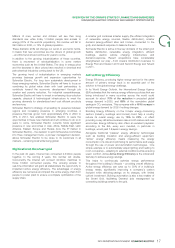 19
19 -
 20
20 -
 21
21 -
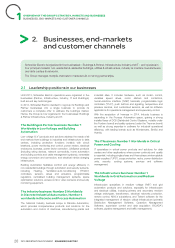 22
22 -
 23
23 -
 24
24 -
 25
25 -
 26
26 -
 27
27 -
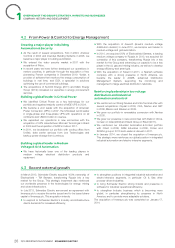 28
28 -
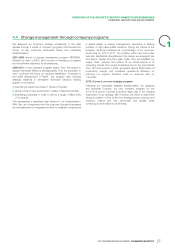 29
29 -
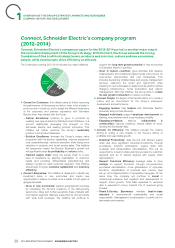 30
30 -
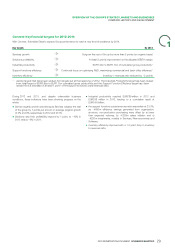 31
31 -
 32
32 -
 33
33 -
 34
34 -
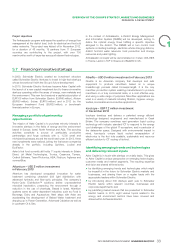 35
35 -
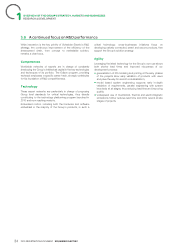 36
36 -
 37
37 -
 38
38 -
 39
39 -
 40
40 -
 41
41 -
 42
42 -
 43
43 -
 44
44 -
 45
45 -
 46
46 -
 47
47 -
 48
48 -
 49
49 -
 50
50 -
 51
51 -
 52
52 -
 53
53 -
 54
54 -
 55
55 -
 56
56 -
 57
57 -
 58
58 -
 59
59 -
 60
60 -
 61
61 -
 62
62 -
 63
63 -
 64
64 -
 65
65 -
 66
66 -
 67
67 -
 68
68 -
 69
69 -
 70
70 -
 71
71 -
 72
72 -
 73
73 -
 74
74 -
 75
75 -
 76
76 -
 77
77 -
 78
78 -
 79
79 -
 80
80 -
 81
81 -
 82
82 -
 83
83 -
 84
84 -
 85
85 -
 86
86 -
 87
87 -
 88
88 -
 89
89 -
 90
90 -
 91
91 -
 92
92 -
 93
93 -
 94
94 -
 95
95 -
 96
96 -
 97
97 -
 98
98 -
 99
99 -
 100
100 -
 101
101 -
 102
102 -
 103
103 -
 104
104 -
 105
105 -
 106
106 -
 107
107 -
 108
108 -
 109
109 -
 110
110 -
 111
111 -
 112
112 -
 113
113 -
 114
114 -
 115
115 -
 116
116 -
 117
117 -
 118
118 -
 119
119 -
 120
120 -
 121
121 -
 122
122 -
 123
123 -
 124
124 -
 125
125 -
 126
126 -
 127
127 -
 128
128 -
 129
129 -
 130
130 -
 131
131 -
 132
132 -
 133
133 -
 134
134 -
 135
135 -
 136
136 -
 137
137 -
 138
138 -
 139
139 -
 140
140 -
 141
141 -
 142
142 -
 143
143 -
 144
144 -
 145
145 -
 146
146 -
 147
147 -
 148
148 -
 149
149 -
 150
150 -
 151
151 -
 152
152 -
 153
153 -
 154
154 -
 155
155 -
 156
156 -
 157
157 -
 158
158 -
 159
159 -
 160
160 -
 161
161 -
 162
162 -
 163
163 -
 164
164 -
 165
165 -
 166
166 -
 167
167 -
 168
168 -
 169
169 -
 170
170 -
 171
171 -
 172
172 -
 173
173 -
 174
174 -
 175
175 -
 176
176 -
 177
177 -
 178
178 -
 179
179 -
 180
180 -
 181
181 -
 182
182 -
 183
183 -
 184
184 -
 185
185 -
 186
186 -
 187
187 -
 188
188 -
 189
189 -
 190
190 -
 191
191 -
 192
192 -
 193
193 -
 194
194 -
 195
195 -
 196
196 -
 197
197 -
 198
198 -
 199
199 -
 200
200 -
 201
201 -
 202
202 -
 203
203 -
 204
204 -
 205
205 -
 206
206 -
 207
207 -
 208
208 -
 209
209 -
 210
210 -
 211
211 -
 212
212 -
 213
213 -
 214
214 -
 215
215 -
 216
216 -
 217
217 -
 218
218 -
 219
219 -
 220
220 -
 221
221 -
 222
222 -
 223
223 -
 224
224 -
 225
225 -
 226
226 -
 227
227 -
 228
228 -
 229
229 -
 230
230 -
 231
231 -
 232
232 -
 233
233 -
 234
234 -
 235
235 -
 236
236 -
 237
237 -
 238
238 -
 239
239 -
 240
240 -
 241
241 -
 242
242 -
 243
243 -
 244
244 -
 245
245 -
 246
246 -
 247
247 -
 248
248 -
 249
249 -
 250
250 -
 251
251 -
 252
252 -
 253
253 -
 254
254 -
 255
255 -
 256
256 -
 257
257 -
 258
258 -
 259
259 -
 260
260 -
 261
261 -
 262
262 -
 263
263 -
 264
264 -
 265
265 -
 266
266 -
 267
267 -
 268
268 -
 269
269 -
 270
270 -
 271
271 -
 272
272 -
 273
273 -
 274
274 -
 275
275 -
 276
276 -
 277
277 -
 278
278 -
 279
279 -
 280
280 -
 281
281 -
 282
282 -
 283
283 -
 284
284 -
 285
285 -
 286
286 -
 287
287 -
 288
288 -
 289
289 -
 290
290 -
 291
291 -
 292
292 -
 293
293 -
 294
294 -
 295
295 -
 296
296 -
 297
297 -
 298
298 -
 299
299 -
 300
300 -
 301
301 -
 302
302 -
 303
303 -
 304
304 -
 305
305 -
 306
306 -
 307
307 -
 308
308 -
 309
309 -
 310
310 -
 311
311 -
 312
312 -
 313
313 -
 314
314 -
 315
315 -
 316
316 -
 317
317 -
 318
318 -
 319
319 -
 320
320 -
 321
321 -
 322
322 -
 323
323 -
 324
324 -
 325
325 -
 326
326 -
 327
327 -
 328
328 -
 329
329 -
 330
330 -
 331
331 -
 332
332
 |
 |

1OVERVIEW OF THE GROUP'S STRATEGY, MARKETS AND BUSINESSES
AMBITIOUS LONG TERM FINANCIAL TARGETS FOR ATTRACTIVE SHAREHOLDER RETURNS
Ambitious long term financial
3.
targets forattractive shareholder
returns
Schneider Electric’s opportunities, strategy and business positioning have led its management to define ambitious long-term targets for the
company. Over the long term, the key priorities remain focused on profitable growth, cash conversion and capital efficiency.
2 sets of targets have been defined: business performance targets and capital efficiency targets.
Across the business cycle(1) performance targets:
Average organic revenue growth: GDP + 3 points.
●
By offer types, revenues growth will be driven by Solutions with a targeted profile at GDP + 3 to 5 points.
The Group intends to maintain solid Products growth, at a rate of GDP + 1 to 3 points.
By geographies, growth will continue to be driven by New Economies with a targeted growth profile at GDP + 6 to 8 points.
For each of these indicators, the reference basis is world GDP growth on a real basis and at market foreign exchange rates;
Adjusted EBITA: margin between 13% and 17% of revenues;
●
Cash conversion: ~100% of net profit converted into free cash flow.
●
Across the business cycle capital efficiency targets:
ROCE(2): between 11% and 15%;
●
Dividend: 50% payout of net income;
●
Capital structure: retain a strong investment grade credit rating.
●
At its Investor Day in February 2014, the company also highlighted Organic margin improvement will continue: Efficiency will be
l
its growth initiatives and near term business focus. It will now focus generated through industrial productivity, support function cost
on integration, technology innovation in products and solutions and leverage and the generation of synergies from the Invensys
capture efficiency gains in order to pursue significant growth acquisition. This will support the organic improvement of the
opportunities and improve its returns. adjusted EBITA margin going forward, from the 2013 proforma
level including Invensys of ~14.0%.
Schneider Electric therefore reaffirmed the targets for performance
across the cycles. The company also set the focus for the next few
years on organic growth and on improving the returns on the
recent investments (organic and acquisitions). Hence the following
objectives were defined:
(1) Schneider Electric defines a business cycle as a period including a slowdown and an expansion, or a period in between. This concept allows
investors to estimate the Group’s long-term growth potential across a business cycle. The length of a business cycle can vary and can not
be forecasted.
(2) ROCE is defined as: adjusted EBITA after tax/Average Capital Employed. Capital Employed is defined as: shareholders’ equity +
Net financial debt + Adjustment for associates and financial assets. In the context of the Invensys acquisition, the tax rate will be adjusted for any
benefits of the Invensys-related tax shield that would not be captured in the P&L.
24 2013 REGISTRATION DOCUMENT SCHNEIDER ELECTRIC
